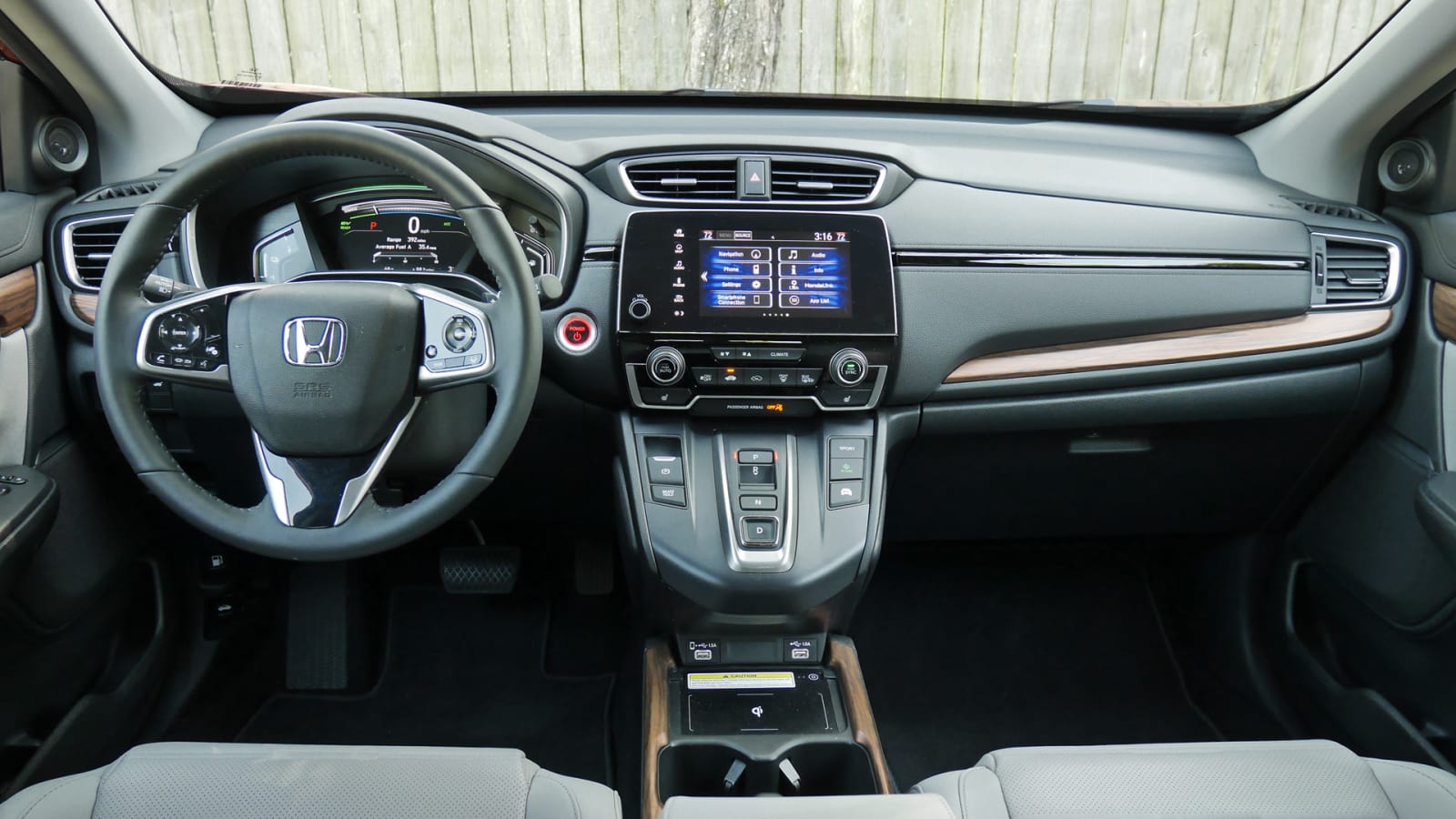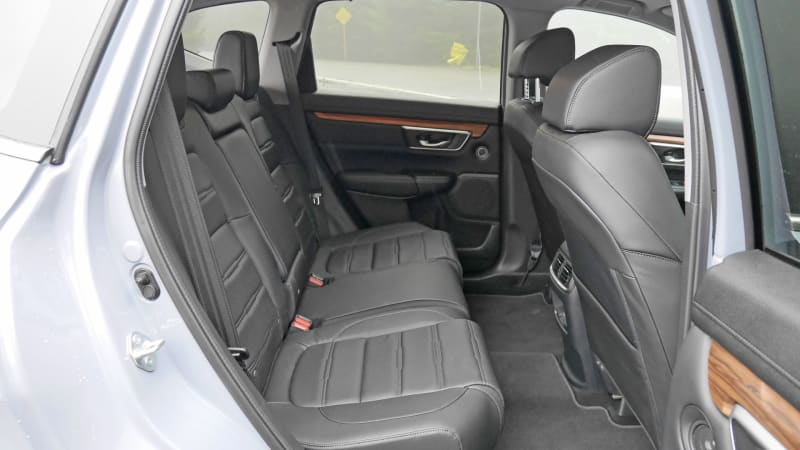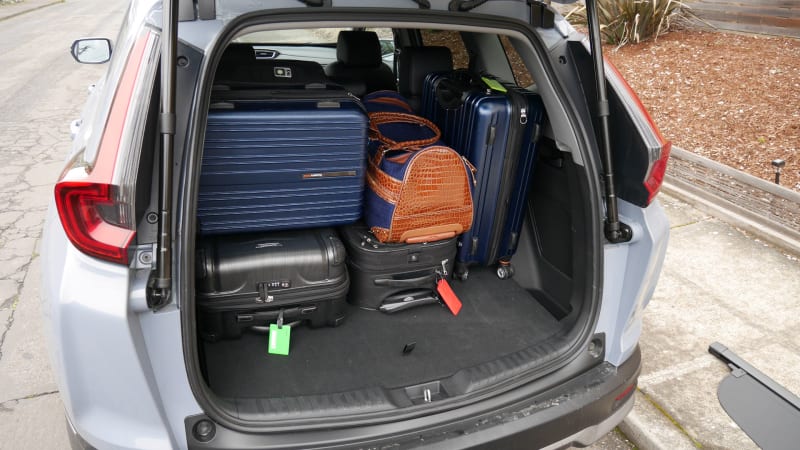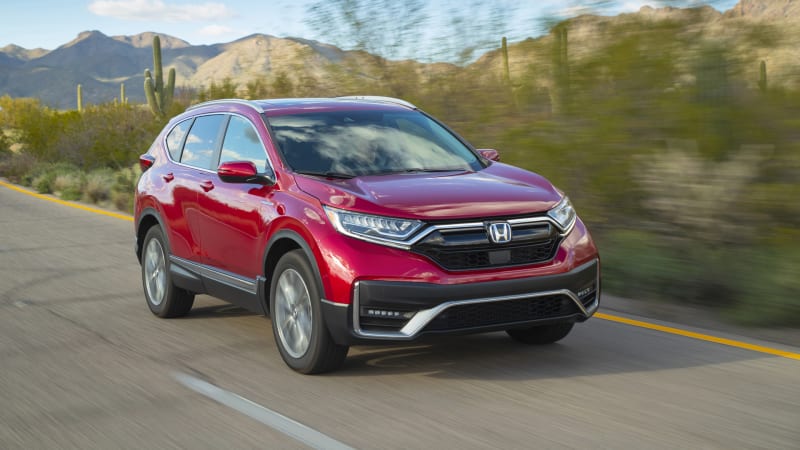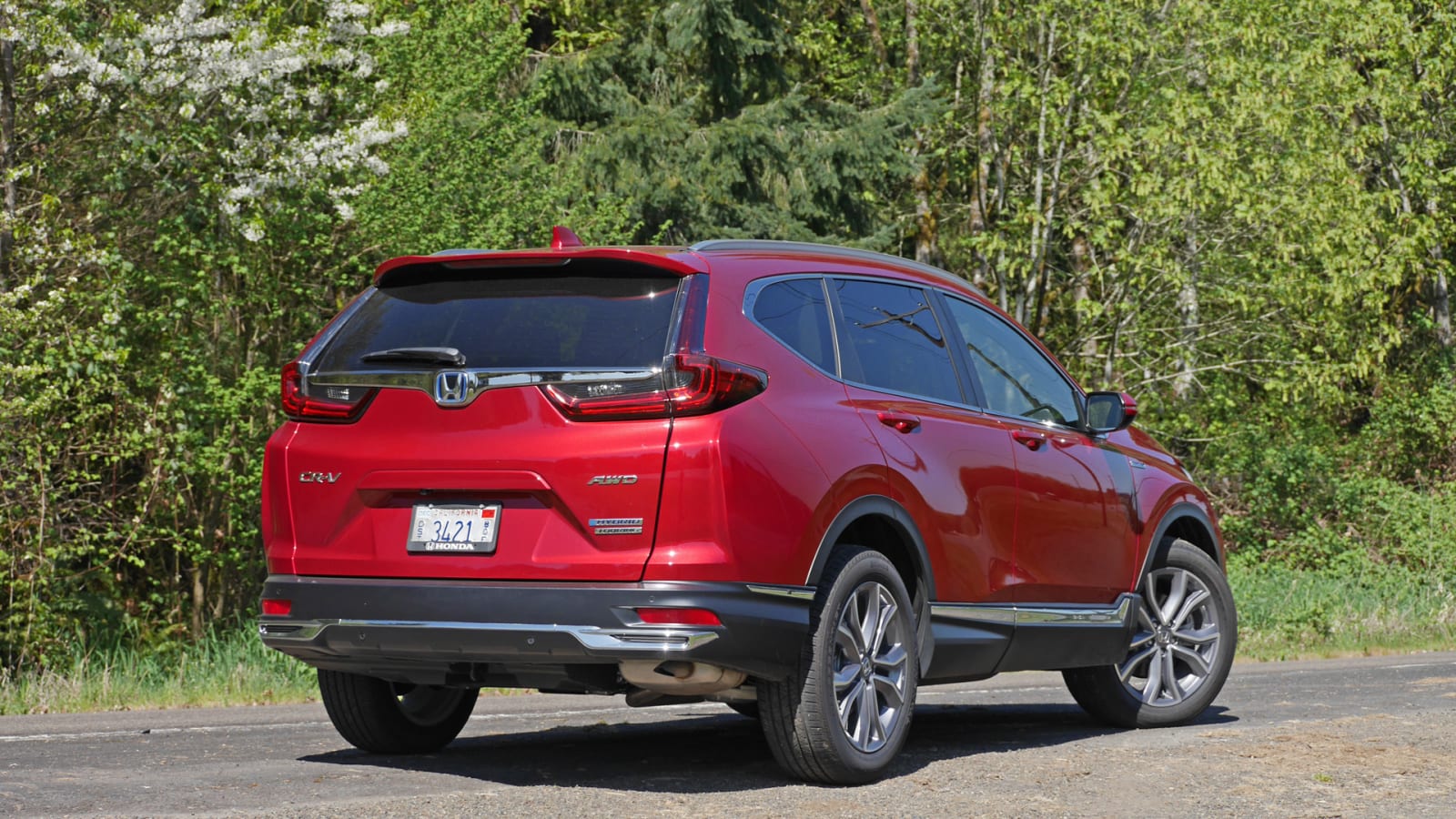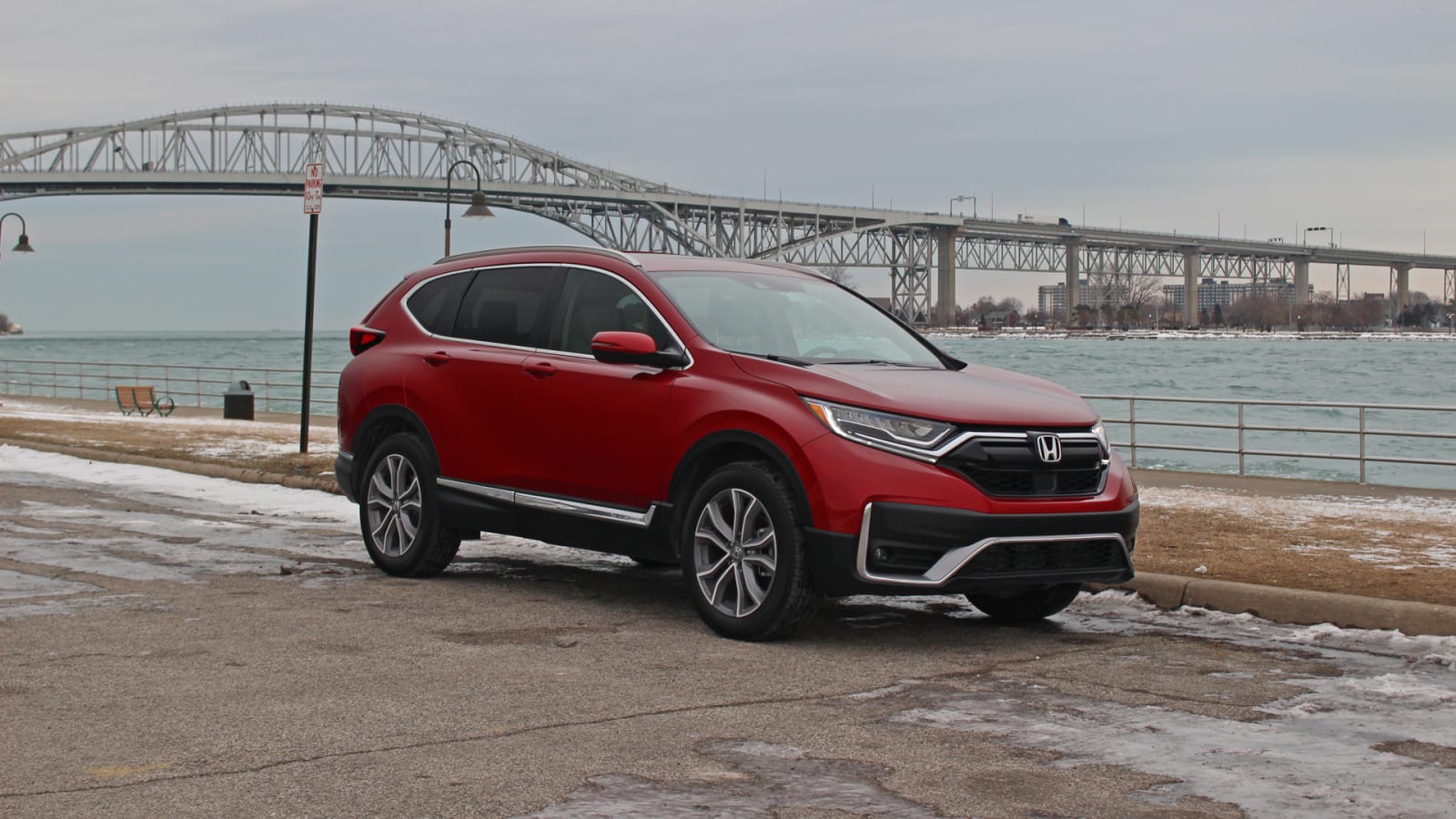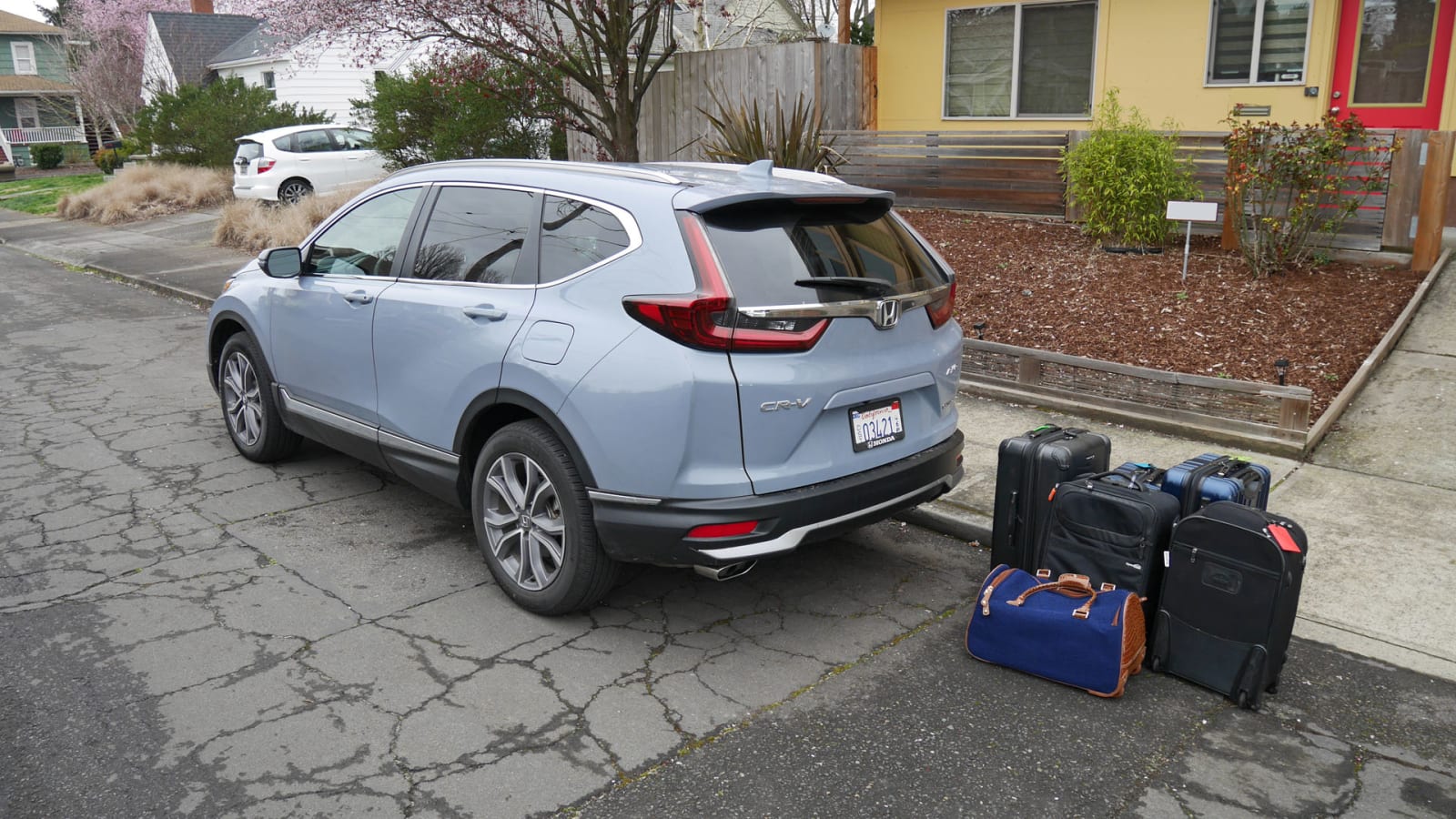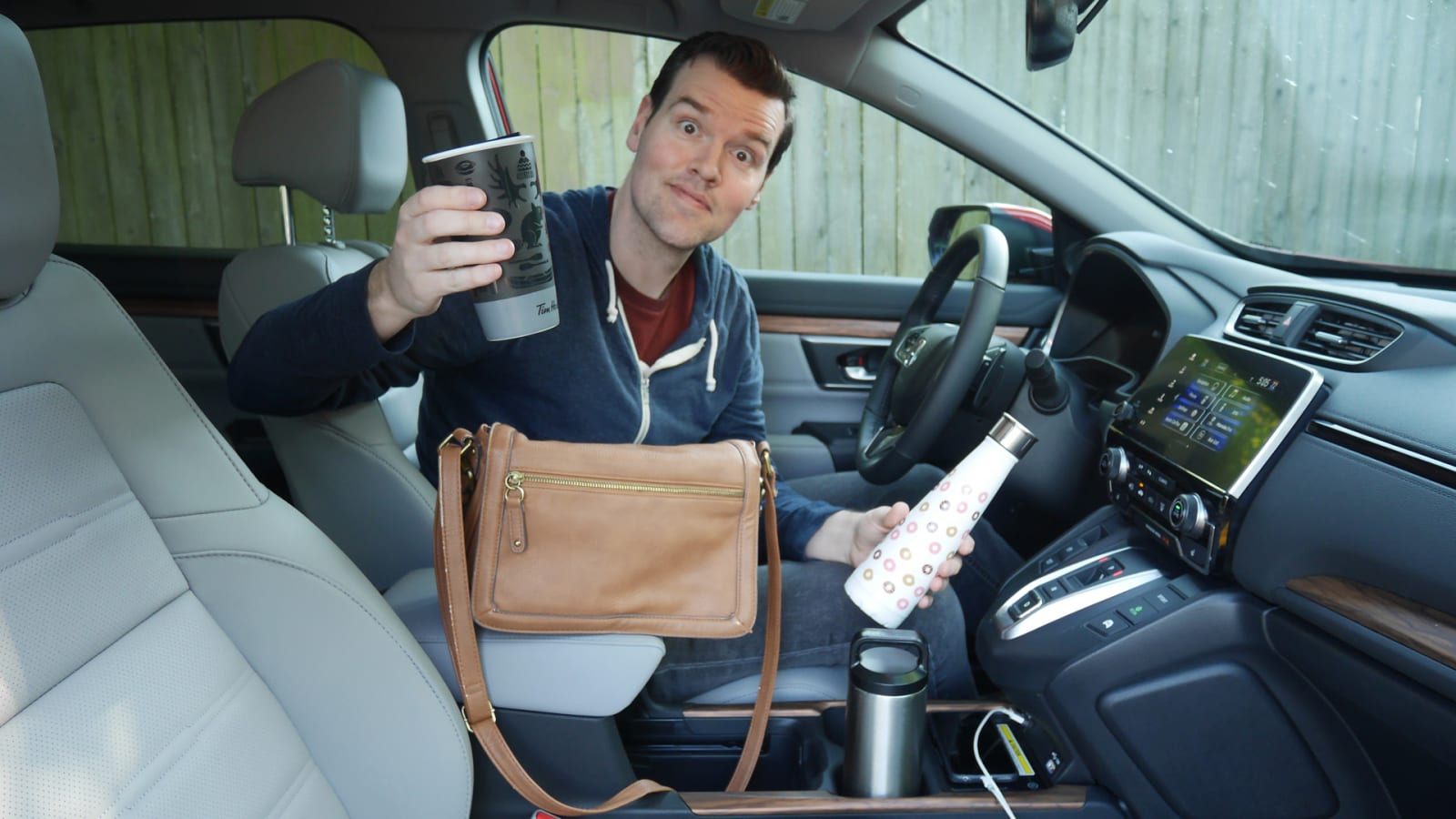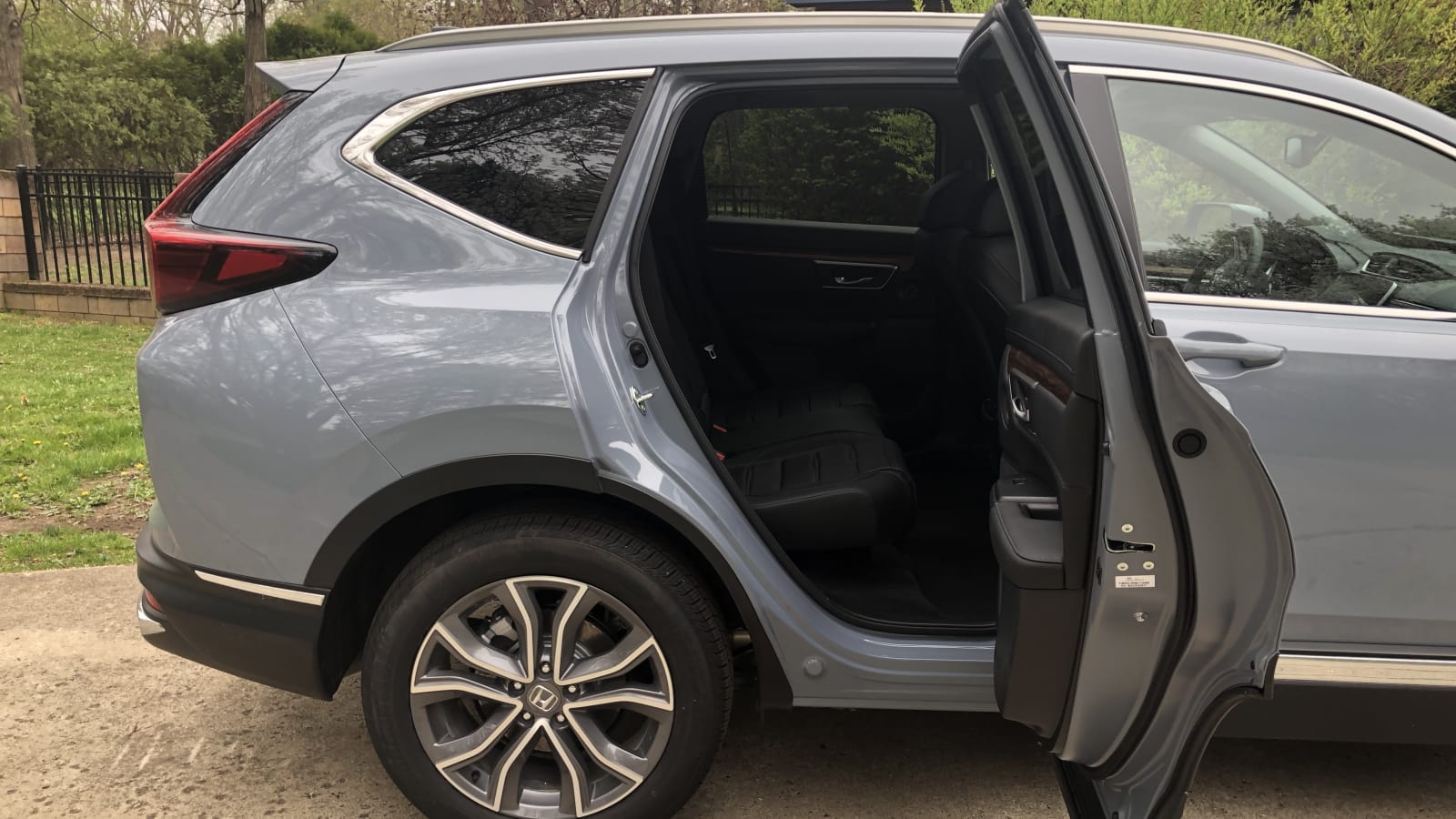So you’re shopping for a compact SUV? Well, it’s probably best to consider the 2022 Honda CR-V as the best place to start the search since it basically checks off all the objective, practical, sensible-shoes criteria. It has a family-friendly back seat, a massive cargo area, strong and efficient engines (especially the CR-V Hybrid), well-balanced driving dynamics, competitive pricing and features, strong safety ratings and well-regarded reliability. Its popularity will likely mean lower discounts but it’ll also mean higher resale prices. Basically, for the vast majority of compact SUV buyers, and especially families, it’s the smartest choice.
So why doesn’t everyone just get a CR-V? Well, people buy cars for things other than objective, practical and sensible-shoes criteria. Want something that’s more engaging to drive and sleeker to look at? Try the Mazda CX-5. Want something with superior technology and bolder style inside and out? Look the Hyundai Tucson’s way. How about a small SUV that offers greater versatility and capability for outdoor adventures? Certain trim levels of the Toyota RAV4 and Subaru Forester would be better bets for getting dirty. All of the above are plenty practical in their own right as well, so it’s not like you’ll be sacrificing much, if anything to get something that meets your specific wants and needs more. That said, you can’t really go wrong with a CR-V.
Interior & Technology | Passenger & Cargo Space | Performance & Fuel Economy
What it’s like to drive | Pricing & Features | Crash Ratings & Safety Features
What’s new for 2022?
The only change for 2022 is that the Touring trim can now only be had with all-wheel drive.
What are the CR-V interior and in-car technology like?
The 2022 CR-V provides a tasteful, if a tad dull, design aesthetic backed up with above-average materials and build construction for this segment. If you’re a previous CR-V owner, you’ll note that this most recent version features a higher-quality and more premium environment than past models. If you aren’t, you’ll still find it to have one of the nicest cabins in terms of quality, and also one of the most functional, as it boasts a number of clever storage solutions in the center console that we detail in our CR-V Interior Storage Driveway Test. The Touring trim, pictured above, also features wireless charging. While a good feature to have, it also shrinks the smartphone-holding bin that is usually there and does a poor job of preventing your phone from flying into the foot well.
Starting with the EX trim, the CR-V comes standard with an abundance of tech for a reasonable price that makes the base LX trim a bit of a moot point. You get three USB ports, Apple CarPlay, Android Auto, a variety of other smartphone integration apps and a six-speaker sound system. Controlling them is a 7-inch touchscreen, which isn’t the CR-V’s strongest element due to frequent glitches, iffy responses, lack of physical menu buttons and an occasionally confusing menu structure. Honda’s newer interface found in the Accord and Civic corrects these issues, and rival systems, particularly the Hyundai Tucson, Subaru Forester, Ford Escape and Toyota RAV4, offer comparable features with more user-friendly interfaces.
How big is the CR-V?
The 2021 CR-V is one of the larger “compact SUVs,” at least on the inside, as Honda typically does a better job than most of maximizing every bit of interior space possible. Although its overall exterior length and width are average for the segment, its passenger and cargo space are better than nearly every competitor. The 60/40-split reclining back seat provides genuine space and comfort for even large adults, while a rear-facing car seat easily fits in the middle position — even with taller passengers up front. Honda also provides LATCH anchors for all three seating positions (one reason we preferred it to the Subaru Forester for child seat fitment). Headroom is abundant regardless of the seating position or the presence of the available sunroof.
Behind that back seat is a massive 39.2 cubic-foot cargo area. To put that into perspective, you can see in the bottom-right photo below how much space was left after loading six suitcases aboard. The Toyota RAV4 and Hyundai Tucson essentially matched it in our luggage tests, with the Nissan Rogue another rung down, but the CR-V’s very low load floor and tall, boxy space arguably make it the easiest to load.
Folding the back seat down using the two remote pulls in the cargo area reveals 75.8 cubic feet of maximum capacity. That’s better than most midsize SUVs like the Chevrolet Blazer and better than nearly all its fellow compact SUVs.
What are the CR-V fuel economy and performance specs?
Every 2022 Honda CR-V comes standard with a 1.5-liter turbocharged inline-four that produces 190 horsepower and 179 pound-feet of torque. It’s paired with a continuously variable transmission and standard front-wheel drive, but all-wheel drive is optional on all but the Touring where it comes standard. Acceleration and fuel economy are among the best in the segment. Official EPA ratings stand at 28 mpg city, 34 mpg highway and 30 mpg combined with FWD and 27/32/29 with AWD.
That may be excellent fuel economy for an SUV, but they’re crushed by the CR-V Hybrid, which is our recommended powertrain choice. It consists of two electric motors and a 2.0-liter inline-four that together produce 212 horsepower, making the Hybrid the most-powerful CR-V. All-wheel drive is standard. Fuel economy is 40 mpg city, 35 mpg highway and 38 mpg combined. The Toyota RAV4 and Ford Escape hybrids are a tiny bit better (and the Hyundai Tucson Hybrid a tiny bit worse), but nowhere near enough to sway your decision one way or the other.
What’s the CR-V like to drive?
The current-generation CR-V, which dates back to 2017, drives with greater refinement and sophistication than past versions. It’s more comfortable, there’s less wind and road noise, and the turbo engine’s low-end power results in quieter, less strained noises when driven around town. These observations largely apply in comparison to most rival SUVs as well, and indeed, the CR-V is one of the best compact crossovers to drive.
In general, that’s because the CR-V is well-rounded. Its steering is nicely weighted and imparts sufficient confidence, but doesn’t make parking a chore. Its handling certainly isn’t the most responsive or road hugging in the segment, but it inspires confidence while not taking away from the comfortable ride. As for the engine, that low-end power from the turbocharged engine makes the CR-V feel like a strong performer at more mundane, around-town speeds. Open it up and it starts to run out of steam, and you’ll notice some droning from the CVT that doesn’t really attempt to mimic a traditional transmission’s gear changes as those of some competitors’ do.
As such, you won’t be missing out on much by opting for the CR-V Hybrid. In fact, the more frugal version is actually the more powerful version, and we appreciate its electric motor’s smooth, torque-rich power delivery. And since it relies so heavily on that electric motor, it’s inherently smoother and quieter, especially around town, than both the gas-only CR-V as well as the Toyota RAV4 Hybrid that operates differently. We think it’s well worth the modest price premium over the gas-only CR-V.
What other Honda CR-V reviews can I read?
Honda CR-V Interior Review Video
In this video, we take a deep dive in the CR-V interior, specifically the Touring Hybrid. We go over its quality, storage space and various features.
2020 Honda CR-V Hybrid Touring Review | Batteries are better
Getting a more complete taste of the first CR-V Hybrid after our first drive review, including real-world fuel economy information.
2020 Honda CR-V Touring Review | Road-tripping Honda’s jack of all trades
We take a road trip in the range-topping Touring trim and report on the features it adds over other trims, plus the updates made for 2020.
Honda CR-V vs Toyota RAV4 Luggage Test Comparison
Comparing the cargo space of the two best-selling SUVs using actual luggage and items you might bring along on a family road trip.
2020 Honda CR-V Interior Storage Driveway Test
We take a deep dive into the CR-V’s excellent interior storage.
Honda CR-V vs Subaru Forester Car Seat Test
We place a forward-only car seat in both the Honda CR-V and Subaru Forester to see which might be a better fit.
How much is the 2022 Honda CR-V price and what features are available?
Base feature content on the LX is well-equipped with the basics. That said, for a relatively small premium of $1,200, the SE or Special Edition trim adds a wealth of worthwhile equipment: proximity entry and push-button start, dual-zone automatic climate control, heated front seats, a six-speaker sound system and a 7-inch touchscreen that includes Apple CarPlay and Android Auto. The EX, which is the base trim level for the Hybrid, adds to the SE content automatic headlights, fog lights, rear tinted glass, a sunroof, a cargo cover, an eight-way power driver seat and two rear USB ports.
For a full breakdown of each trim level’s feature content, specs and local pricing, see our 2022 CR-V page here on Autoblog.
All prices below include the $1,225 destination charge. All-wheel drive is a $1,500 on all trim levels but the Touring, which includes it as standard equipment. Every Hybrid is all-wheel-drive.
LX: $26,975
SE: $28,175
EX: $29,485
EX-L: $32,075
Touring AWD: $36,775
Hybrid EX AWD: $32,185
Hybrid EX-L AWD: $34,775
Hybrid Touring AWD: $37,975
What are the CR-V safety ratings and driver assistance features?
Every 2022 CR-V comes standard with the “Honda Sensing” suite of accident avoidance tech that includes forward collision warning, automatic emergency braking, lane-keeping assist, and a driver inattention monitor. Blind-spot and rear cross-traffic warning are standard on the EX trim level and higher Adaptive cruise control is standard on all trims, and is actually a superior system to the one found in Honda’s Passport and Pilot. That said, it isn’t as smart or responsive as those of the Mazda CX-5 or Hyundai Tucson.
The CR-V received the best-possible five-star crash rating from the government for overall, frontal and side crash protection. The Insurance Institute for Highway Safety named it a Top Safety Pick for its best-possible scores for crash protection and prevention. Its headlights were given different scores depending on trim level. The Touring’s LED lights got a “Good” score, while the Hybrid EX and EX-L’s got an “Acceptable,” and the non-Touring gas models got a “Marginal.”
Source: www.autoblog.com

